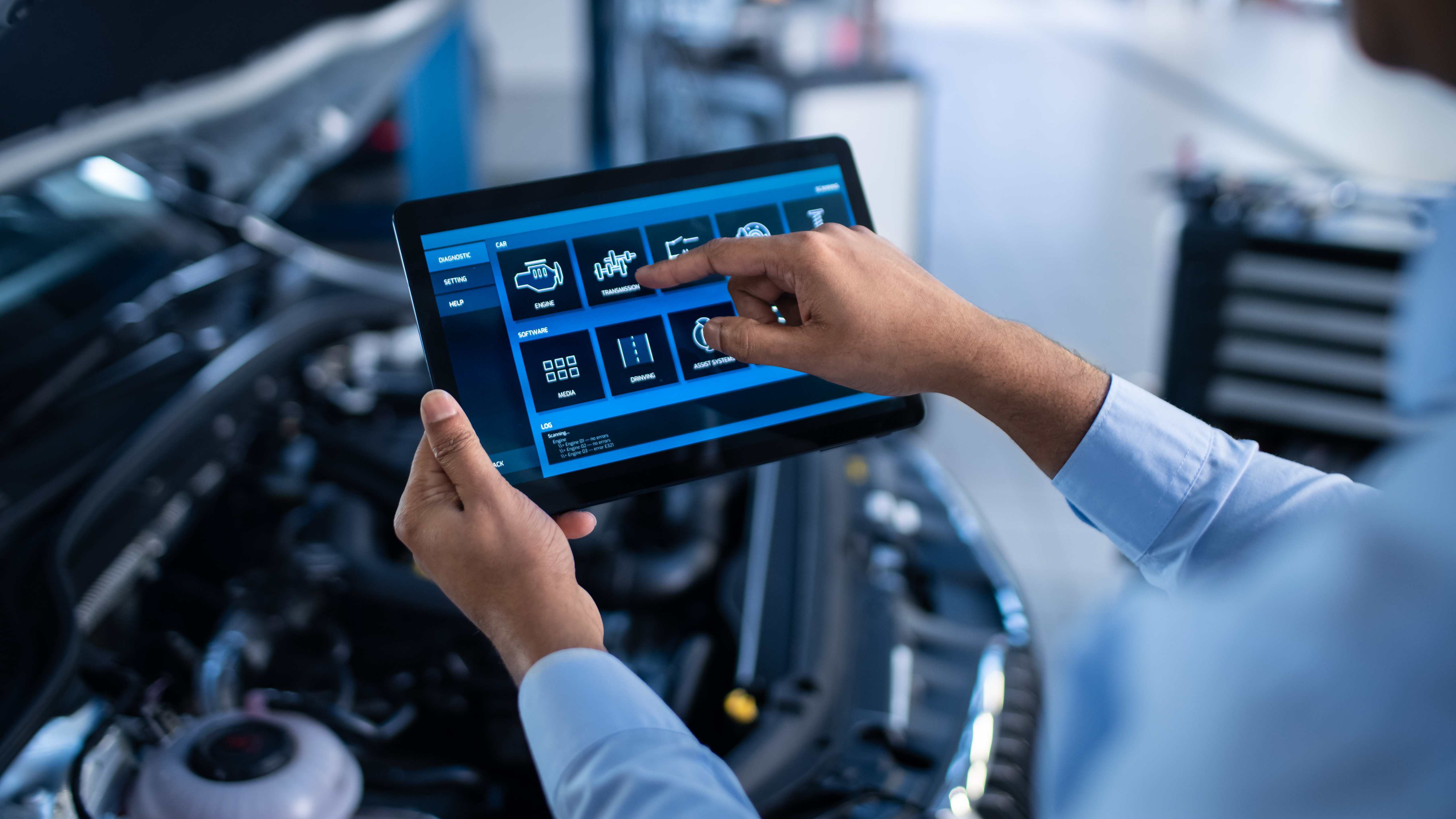
04 Jun Why Pre- and Post-Repair Scanning is Critical in the Repair Process
“Check engine” Have you ever seen that signal pop up with a foreboding sense? Since 1996, all vehicles have come with its own computer that connects to all the sensors in the vehicle. Sensors are an important feature in your vehicle that alert the owner when there is something wrong with the vehicle

Vehicle technology was initially implemented by the California Air Resources Board (CARB) with the On Board Diagnostic (OBD) to control polluting emissions from vehicles in the mid-90’s. The implementation of electronic computers to regulate the engine and associated computers enabled vehicles to reduce their pollutants or emissions.
Newer vehicles are like computers on wheels, designed with a myriad of sensors, actuators, components, and complex control modules that enable advanced driver-assistance systems (ADAS) along with other safety features. Because of the vast amount of technology in today’s vehicles, there are not nearly enough malfunction indicator lights (MILs) to cover all the possible diagnostic trouble codes that can be triggered in an accident or a collision. Today’s vehicles have so much technology that they often have hundreds or thousands of computer systems working together to operate things like cruise control, rear backup cameras, blind spot sensors, or lane departure warnings.
As a consumer, do you have an understanding of the auto manufacturer’s requirements for a safe repair to your vehicle? Many OEMs (Original Equipment Manufacturers) have released official statements saying that vehicles need to be scanned before and after repairs in order to establish that repaired vehicles are safe to drive and the sensors and computers within them are reliable.
To ensure the thoroughness of the repair and the ultimate safety of the vehicle owner, Kniesel’s has developed a new Standard Operating Procedure in which we conduct pre-repair and a post-repair scans on all vehicles we repair. A diagnostic scan looks at every computer system, sensor, or automatic feature in your car to make sure they’re working properly.
Why a pre-scan? A pre-repair scan can help identify and pinpoint the exact issue. Pre-repair scans will detect just about everything from a door handle that isn’t positioned correctly to a bumper that is misaligned. Scanning is the tool we use to identify all the diagnostic trouble codes (DTCs) that are stored in the vehicle before the repair, and ensures that there are no DTCs remaining post-repair.
Why a post-repair scan? Post-repair scans ensure that our work is done accurately and completely. The scan serves as a tool to indicate that all the sensors are calibrated correctly. A post-repair scan allows Kniesel’s to re-calibrate the sensor(s) and ensure the vehicle has been repaired to full factory specifications. Post-repair scanning is an effective best practice to ensure the safety of the vehicle owner.









